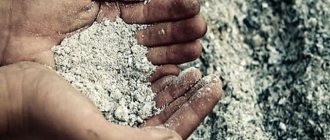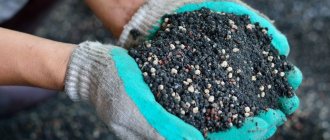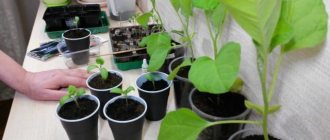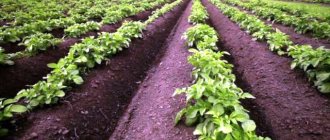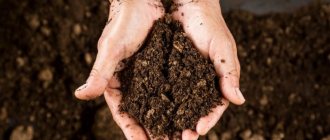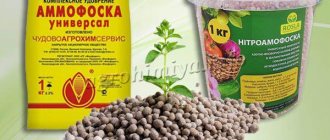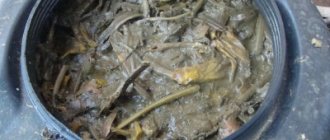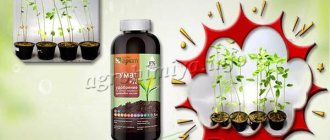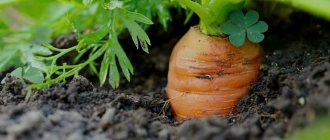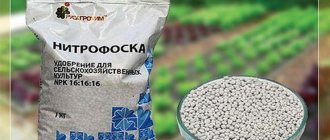Ash is not just a fireproof residue after combustion, but also a valuable microfertilizer. Our material contains everything about how ash is useful for plants, how to use ash as a fertilizer, how to dilute ash for feeding, what spraying with an ash solution is...
A good owner will never lose anything at his dacha, everything will go to work. Did you burn dry grass and branches? Have you lit a stove or fireplace in the house? Did you bake potatoes over a fire? Congratulations! You now have a lot of useful fertilizer - ash.
We will use it! Ash is an excellent source of minerals. And also she:
- improves the quality of acidic soil;
- helps soil microorganisms quickly decompose organic matter, turning it into elements accessible to plants;
- promotes rooting of seedlings;
- helps to more effectively combat many pests and diseases.
1 tsp = 2 g ash, 1 tbsp. = 6 g, 1 matchbox = 10 g, 1 glass = 100 g, 1 liter jar = 500 g of ash.
What kind of ash is there?
Is it possible to use ash in the garden? Need to! But not every one.
For example, if you dispose of household waste, old boards with varnish and paint residues, or unnecessary printed materials (newspapers, posters, boxes, glossy magazines) with printing dyes and impregnations, the resulting ash is unlikely to benefit plants. Rather, the harm is due to chemical residues. This kind of ash should not be used.
But even when burning natural plant residues (branches, tops of plants, firewood, dry grass, peat), the output will be substances of different composition. Thus, wood ash contains a large amount of calcium - and there is much less of it in soft wood (aspen, spruce, pine, alder, linden) than in hard wood (oak, ash, elm, larch, poplar). And young wood contains noticeably more potassium compared to old wood. There is also a lot of this element in the ash obtained from the stems of sunflower and buckwheat, wheatgrass rhizomes, and grass.
The average percentage of compounds containing basic plant nutrition elements in the ash is given in the table:
| Ash | Potassium | Phosphorus | Calcium |
| Sunflower stems | 30-35 | 2-4 | 18-20 |
| Buckwheat straw | 25-35 | 2-4 | 16-19 |
| Rye straw | 10-14 | 4-6 | 8-10 |
| Wheat straw | 9-18 | 3-9 | 4-7 |
| Potato tops | more than 20 | up to 8 | up to 32 |
| Birch firewood | 10-12 | 4-6 | 35-40 |
| Spruce firewood | 3-4 | 2-3 | 23-26 |
| Pine firewood | 10-12 | 4-6 | 30-40 |
| Peat | 0,5-4,8 | 1,2-7 | 15-26 |
| Dung | 10-12 | 4-6 | 7-9 |
How to get useful ash
The raw materials for ash are bark, trees, stems and foliage of plants, and charcoal. On the site you can burn stems and straw, plant debris, branches after seasonal pruning of trees. Do not use rotten wood, raw materials with plastic and rubber residues, or paper with colorful images and a glossy cover. Raw materials should be burned in calm weather. It is recommended to store the resulting product in a dry room away from housing and change houses, with an exhaust hood. It is more convenient to use metal barrels for burning: this way the ashes will not scatter around the area.
Composition and benefits of ash for plants
As we have already written, after burning plant residues, almost all useful macro- and microelements from them pass directly into the ash (except for nitrogen). Potassium, calcium, magnesium, phosphorus, iron, sulfur, silicon, boron, manganese - and this is not a complete list of vital elements!
In addition, in the ash all of them are already in an easily accessible form and in an excellent ratio.
So, the beneficial properties of ash:
| Substance | Content in ash (%) | Beneficial features |
| CaCO3 (calcium carbonate) | 17 | Improves metabolic processes, promotes more luxuriant flowering. |
| CaSiO3 (calcium silicate) | 16,5 | Helps the plant absorb vitamins. This compound is especially useful for bulbous plants, because When it is deficient, the bulbs begin to split and dry out. |
| CaSO4 (calcium sulfate) | 14 | Improves plant resistance to diseases and unfavorable climatic conditions. Promotes root development and growth. |
| CaCl2 (calcium chloride) | 12 | Participates in the process of photosynthesis, promotes the formation of enzymes, increases plant immunity and their frost resistance. Improves soil uniformity. |
| K3PO4 (potassium orthophosphate) | 13 | Helps plants regulate water balance and withstand winter frosts. If the amount of this substance is insufficient, ammonia accumulates in the leaves and roots, slowing down the growth of the plant. |
| MgCO3 (magnesium carbonate) | 4 | They participate in the formation of carbohydrates, from which starch and cellulose are subsequently formed. Helps normalize the water balance of plants, as well as activate enzymes. |
| MgSiO3 (magnesium silicate) | 4 | |
| MgSO4 (magnesium sulfate) | 4 | |
| NaPO4 (sodium orthophosphate) | 15 | |
| NaCl (sodium chloride) | 0,5 |
Compound
The composition of wood ash consists of a huge amount of mineral impurities.
Contents of the most important elements
| Element connections | Contents per 100 g |
| Calcium carbonate (CaCO3) | 17% |
| Calcium silicate (CaSiO3) | 16,5% |
| Calcium chloride (CaCl2) | 12% |
| Potassium orthophosphate (K3PO4 | 13% |
| Calcium sulfate (CaSO4) | 14% |
| Sodium orthophosphate (NaPO4) | 15% |
| Magnesium compounds | 4% |
| Sodium chloride (NaCl) | 0,5 % |
The chemical formula varies slightly depending on the type of wood being burned. The ashes of deciduous trees, young branches and fallen leaves are considered richer in mineral content compared to coniferous species. The powder obtained after burning green plants and grass contains less calcium compounds than wood residues. The components of wood ash have many beneficial functions.
Use of ash - when and how to use
How to use ash in the garden and garden? It is an excellent organo-mineral fertilizer, with which you can carry out both root and foliar feeding. When fertilizing plants with ash, you need to focus on the needs of your green pets.
It is added to excessively acidic soil for plowing, when planting tubers or seedlings, and when feeding adult plants. If this is root feeding, the application of ash must be combined with watering.
It is not recommended to mix ash with organic and ammonia fertilizers (to avoid ammonia losses), as well as with water-soluble phosphate fertilizers (ash reduces the absorption of phosphates by plants).
- in an infusion of ash (as a growth stimulant) before planting. 3 tbsp. ash is infused in 1 liter of water for a week, shaking occasionally to ensure uniform dissolution of the particles. The strained infusion is diluted with water 1:3 before use.
- A soap-ash solution (4 tablespoons of ash + 2 tablespoons of water, then add 1/3 of a piece of laundry soap dissolved in 2 liters of warm water) is sprayed on garden and garden plants to protect them from codling moths, sawflies, bud mites, onion and carrot flies, caterpillars.
- Ash powder is used to dust potato tubers before planting (1 kg per 30 kg of tubers) and sprinkle sections of fleshy rhizomes of flower plants when dividing them. Dry ash is scattered directly under the plants if they are overwhelmed by snails and slugs - invertebrates usually refuse to move on such a “carpet”. You can also dust plants damaged by white and gray rot and powdery mildew with ash as protection.
What properties of ash will bring real benefits to plants?
As a fertilizer, wood ash is indispensable for the garden and indoor plants. The working solution is suitable for treating shrubs and fruit and berry trees. Each element contained in the ash infusion for feeding brings certain benefits:
- Calcium stimulates green growth.
- Potassium promotes flowering and fruiting of indoor and garden crops.
- Sodium activates enzymes, normalizes water balance in cells, and alkalizes the soil.
- Phosphorus is needed by grapes and other heat-loving plants.
- Silicon improves the absorption of microelements from the soil.
- Magnesium is involved in photosynthesis, accelerates the growth of crops and provides sweetness to fruits.
- Chlorides protect seedlings and adult plants from fungus.
In addition to the listed elements, stove ash includes more than 30 components necessary for the life of crops at different stages of the growing season. Using ash as a fertilizer helps maintain the appearance of plants, prevents the death of foliage, diseases of roots and fruits.
How to understand that plants need ash
The three main beneficial components of ash are calcium, potassium and magnesium. The use of ash in the garden is justified only if there is a lack of these substances in the soil, because Excess fertilizer applied without measure can harm plants. How can I track this?
| Signs of lack of batteries | |
| Potassium | deformation and chlorosis (depigmentation) of leaves, falling of flowers, ovaries and buds, dark spots on fruits, death of the upper part of shoots and cessation of plant growth |
| Calcium and magnesium | the leaves wither, curl up, their edges dry out, the roses stop smelling |
| Signs of excess batteries | |
| Potassium | sudden discoloration to pale green, followed by loss of foliage, browning of the flesh of pears and apples |
| Calcium | leaf loss, shoot dieback, excessive growth of leaf rosettes, chlorosis |
| Magnesium | death of roots and, as a consequence, inability to absorb calcium |
The influence of ash on soil quality
Annual planting of vegetables and potatoes depletes the soil, and the use of mineral fertilizers alone accelerates this process. The soil needs organic matter, since microorganisms multiply when there is food and water. Manure, the use of ash for plants, green manure, and compost help restore soil fertility and make crops stable.
Even if you constantly use mineral mixtures, you need to add organic matter every 2-3 years so that there is someone to process the nutrients. Most of them enter plant tissues only after fermentation in the digestive tract of bacteria. In the absence of microorganisms or their small quantity, fertilizers are not processed, but soil salinization occurs, which has a bad effect on crop growth.
The use of ash as a fertilizer in autumn or spring allows you to stimulate the revival of colonies of microorganisms, which, through their activity, directly affect the productivity and immunity of plants. Also, how you incorporate ash into the soil is important because beneficial bacteria need water to feed and reproduce.
Ash for the garden
Ash is suitable for almost all garden crops, but it is most advisable to fertilize such crops with it as:
- potato,
- tobacco,
- legumes,
- buckwheat,
- Solanaceae.
In the fall, apply the ash to the area prepared for planting onions and dill (up to two glasses of powder per 1 sq.m.) - this way you will protect these crops from possible root rot, because ash increases the air and moisture permeability of the soil.
In the spring, preparing to plant potatoes , when digging the area, add ash at the rate of 1 cup per 1 sq.m., or when planting, add up to 2 tablespoons to each hole. ash mixed with soil. During the first hilling during the growing season, add 1-2 tbsp. ash under the bush.
For zucchini, cucumbers and squash, add 1 cup of ash per 1 square meter for digging and about 1 tbsp. in each hole when planting seedlings in the ground.
For cabbage , it is recommended to add ash at the rate of 1-2 cups per 1 sq.m (for digging).
Before planting seedlings of tomatoes, peppers and eggplants, fertilize the ground at the rate of 3 cups of ash per 1 sq.m. And when planting plants in the ground, also add one handful of ash to each hole.
Enrich areas intended for carrots, beets, radishes, dill, parsley, lettuce and legumes with 1 cup of ash per 1 sq.m.
Feeding apple trees with ash. How to feed an apple tree in the fall
Autumn feeding of the apple tree is an optional procedure. On small farms and small gardens it is carried out very rarely. But this does not mean that it is of no use. Knowing what to feed an apple tree in the fall, you can significantly increase the yield next year and activate the tree’s defenses, which it will need during winter frosts.
How to feed an apple tree in the fall
The first autumn fertilizers can be applied already from the end of August. This is done so that the beneficial substances have time to be absorbed by the tree (this takes at least 3 weeks) and begin to activate before the first frost.
Ash for the garden plot
The addition of ash is also beneficial for fruit trees and shrubs in the garden.
Fertilizing trees with ash is important when planting them (1-2 kg of ash in each planting hole), as well as later when digging up the soil under them using the same calculation.
the grapes with ash 3-4 times per season - in the evening after sunset, spray the leaves with ash infusion diluted with water in a ratio of 1:5.
The ash is also suitable for feeding strawberries (garden strawberries). In the fall, add 1 cup of wood ash per 1 square meter to the area prepared for it. m. In the spring, before mulching the soil and after fruiting, scatter a handful of ash between the rows before watering.
And before flowering, strawberries can be fed by dissolving 1 glass of sifted ash, 2 g of boric acid and 2 g of potassium permanganate in a bucket of hot water. Plants are sprayed with this composition during the period of inactive sun (morning or evening).
Use of wood ash
The most common use of coal is in agriculture. Ash obtained from burning wood residues is recommended for use in the following cases:
- shedding of leaves on grapes;
- cracking of carrot fruits;
- premature rotting of fruits;
- potatoes and tomatoes turn black;
- mold on strawberries;
- signs of fungal diseases on the leaves.
In addition, soot is used as a universal fertilizer, soil pH regulator, and protection against insect pests.
Using ash against diseases and insects
Wood ash in the country is successfully used when:
- powdery or downy mildew;
- rot;
- cabbage midges, Colorado potato beetles;
- ants and slugs.
As soon as the first signs of fungal diseases are detected on the leaves of the seedlings, an ash mixture is used. To prepare it, 2-3 kg of ash is diluted with 10 liters of water. Leave in a warm place for several days. The resulting ash infusion is used to irrigate the shoots for 3-4 days, then take a break for 15-20 days and repeat the procedure. The addition of grated laundry soap enhances the effect.
Dry ash is not liked by various garden pests, especially snails and slugs. The protective properties of ash are enhanced when combined with tobacco dust in equal parts. It is sprayed in places where insects accumulate at the rate of 200-300 grams of product per 1 m2.
Stimulating plant growth with ash solution
The combustion products of wood raw materials are often used as a natural stimulator of seed germination. Soaking in an ash solution activates the internal resources of the grain. The ashes are diluted with boiled water in a ratio of 1:10. The solution is left in a dark place for 2-3 days. The seeds are soaked in the resulting solution, preferably overnight. This method of increasing germination is used when germinating cucumbers, cabbage, eggplants, and tomatoes.
Ash for flowers and indoor plants
Indoor flowers can be fed using ash infusion (3 tablespoons of ash are infused in 1 liter of water for a week, shaking occasionally to dissolve the particles evenly. The strained infusion is diluted with water 1:3 before use) at the rate of no more than 100 ml of infusion per pot with a capacity of 1 l.
Ash will also help fight aphids and small fleas. For this purpose, plants are again dusted with dry ash or sprayed with a soap-ash solution.
After spraying with a soap-ash solution, protect the plants from direct sunlight and do not spray with water for 4-5 days.
Among garden flowers, ash root and foliar feeding of roses . They are watered with an ash solution (100 g of ash per 10 liters of water) and the leaves are sprayed (200 g of ash per 10 liters of water).
Wood ash as a fertilizer is perfect for peonies, lilies, gladioli and clematis . For them, use the same ash infusion as for indoor plants (300-400 ml of infusion per 1 sq.m.). And when planting these plants in open ground, also add 5-10 g of ash to each hole.
Wood ash as a fertilizer: what it consists of and what properties it has
Unlike conventional fertilizers, ash obtained from burning plants does not contain harmful components. Nutrients and chemical compounds are combined in such quantities and proportions that they quickly dissolve in the soil and are completely absorbed by plants. The composition does not contain nitrogen, which is also important for garden and vegetable crops.
What is the chemical composition of ash?
The chemical composition of wood ash and coal particles cannot be determined with certainty because it is determined by the composition of the plants being burned. So, when using coniferous or deciduous wood, straw or peat, the composition will be radically different.
But an approximate, average formula for ash exists. She was brought out by Dmitry Mendeleev. It includes:
- carbonate, silicate, sulfate and calcium chloride,
- potassium orthophosphate,
- magnesium carbonate, silicate and sulfate,
- sodium orthophosphate chloride.
In quantitative and proportional terms, calcium in this fertilizer is superior to other substances. This microelement largely ensures intensive growth and full development of plants.
Useful composition and properties of microelements of wood ash
Each of the main microelements that make up wood ash gives plants certain properties.
Calcium carbonate speeds up metabolism. This component is necessary in the process of transporting nutrients in plant cells. Calcium carbonate is considered especially important in growing decorative flowers. It is responsible for increasing the growth and splendor of inflorescences. Among vegetables, ashes are most useful for cucumbers. The crop responds to fertilizing with active growth.
Calcium silicate is another essential substance. It participates in the formation of plant cell compounds and improves the absorption of vitamins. Calcium silicate is especially important for onions. If it is deficient, the bulbs may dry out and split. If you have this problem, just water the plant with an infusion of coal and ash.
Sodium chloride, present in high concentrations in wood ash, improves the process of photosynthesis activity. Promotes the development of winter hardiness of fruit trees and grapes.
It is often said that chlorine can be dangerous for plants. However, in ash its quality and concentration are such that it has only a positive effect.
And the lack of this element has a detrimental effect on the growth and preservation of fruits of tomatoes, apples, carrots and grapes. A sufficient amount of chlorine when growing roses helps prevent blackleg.
Potassium in the composition has a beneficial effect on maintaining water balance in all crops. With a sufficient amount of potassium compounds in the soil, heat-loving plants survive the winter better. Adding this component helps make the soil more alkaline, which is especially necessary for flowers (roses, chrysanthemums, lilies).
Potassium sulfate is useful during active growth of green mass. When growing onions for feathers, this connection is especially necessary. Normalizes the process of growth and protection of plants from negative external factors and 3 magnesium compounds.
What can you mix ash with?
Compliance with certain rules for the use of combustion products of plant species helps to increase the efficiency of fertilizing. It is important to mix it correctly and in the right proportions with other components.
A combination with urea (or urea) gives good results in fertilizing. This fertilizer will contain the three most important components for plant growth and development: phosphorus, potassium and nitrogen.
It is necessary to add a glass of ash and a tablespoon of urea to a container with 10 liters of water and mix thoroughly until both components are completely dissolved.
The finished fertilizer is applied to the soil under the roots, making sure that the consistency is uniform. Caution - do not allow drops of the solution to get on the leaves.
Plant ashes are useful to add to compost. Due to its high alkaline and mineral content, the substance helps improve plant flora and reduces the effect of harmful chemical compounds that enter the soil with rain.
The combination of wood ash and herbal infusions copes well with common diseases and pests - powdery mildew, aphids and others.
What should you not mix ash with and why?
There are a number of contraindications to the use of ash. It cannot be mixed with some substances and fertilizers. It is prohibited to combine wood ash with any nitrogenous fertilizers.
It is not advisable to simultaneously use ash with superphosphate, manure or bird droppings. The combined use of these substances may cause an undesirable reaction, so they must be used separately from each other.
If the soil is carbonate in composition, it is not advisable to fertilize it with ash. This combination can cause an alkaline reaction, which may be unfavorable for the future harvest.
How can you replace ash?
If it is necessary to improve acidified soil, but there is no ash at hand, dolomite flour or fluff lime can be an alternative. The first is applied at the rate of 500 g per 1 sq.m for acidic soils and 400 g per 1 sq.m for moderately acidic soil. The second - at the rate of 500 g per 1 sq.m. in acidic soil and 300 g per 1 sq.m. in moderately acidic soil.
Ash is a universal fertilizer. However, it can also cause harm in the garden if used excessively or incorrectly. We hope that with our material we have helped you understand the features of its use.
Contraindications for using ash
Ash is a universal remedy, but it is not always possible to use it, and in some cases it is even harmful. Charcoal reduces the acidity of the soil, as a result, it should not be used in low or normal soil pH. Plants that prefer acidic soil should not be fertilized with soot. These include:
- conifers;
- camellias;
- rhododendrons;
- heather;
- sorrel;
- radish;
- watermelon;
- orchids and violets.
An overdose of fertilizers has a bad effect on the growth and development of seedlings. Excess minerals can be determined by the appearance of the garden crop. So, too much calcium is indicated by:
- early drying of tomato shoots;
- rapid growth of leaves on apple trees and grapevines;
- chlorosis on pink leaves;
- shedding of flower leaves.
A large amount of potassium leads to:
- the appearance of dark pulp on apples and pears;
- bitter taste of fruits;
- shedding of leaves.
Charcoal is incompatible with nitrogen fertilizers. Under its influence, the effect of nitrogen is neutralized, and the seedlings cease to receive the necessary nutrients. If necessary, fertilizing can be carried out at different periods: one fertilizer in the fall, and another in the spring.
Phosphorus compounds should also not be combined with ash. This makes it difficult for plantings to absorb micronutrients and impairs their development.
When to use?
This organic compound contains various trace chemicals that should be part of healthy plants. Their deficiency negatively affects development and growth, leading to the appearance of the disease.
As we learned above, the main part that is contained in ash in various compounds is calcium.
Signs of calcium deficiency:
- Depigmentation of leaves in indoor plants (they become snow-white).
- Deformation of leaves (tips are curved down, edges are curled).
- Peduncles fall on nightshades.
- Black spots appear on tomato fruits.
- The upper parts of the shoots die off on the apple tree, and the taste of the fruit deteriorates.
- Stains of dead tissue form on the tubers and trunks of potatoes and onions.
The second most important substance that should be used for normal plant life is potassium. It is contained in the ash even in a smaller volume than calcium, but in sufficient quantity to normalize metabolic processes in the plant body. If this is not enough, it can be recognized by some changes in appearance.
Signs of potassium deficiency:
- On fruit trees, the leaves wilt prematurely, but remain on the branches.
- Roses stop smelling.
- On potatoes and nightshades, the edges of the leaves begin to dry out; later they can curl into a tube.
Ash contains magnesium. It is the forming element that allows carbon to be produced. With its deficiency, the plant is suppressed and its active development stops. The same symptoms appear as with potassium deficiency.
Sodium is a conditionally essential substance, so when applied as a fertilizer, you can ignore its small amount in the composition.
Where is coal ash used?
Coal ash is produced by burning brown or hard coal. Its composition differs from that of wood. Coal combustion products contain a small amount of useful substances. In addition, these substances in coal ash are present in a form that is difficult for plants to reach - in the form of silicates. Therefore, coal ash is practically not used as a fertilizer. But they still add it to the soil. Coal ash contains a large amount of silicon oxides, so it is used for draining and loosening heavy, wet clay soils. This measure improves the structure of the soil and increases its breathability.
It is not recommended to use coal fertilizer on sandy and acidic soils, since the high sulfur content in it contributes to even greater acidification.
Coal combustion products must be combined with ammonia, organic and calcium-containing fertilizers.
Coal ash is recommended to be applied to crops that actively consume sulfur. These include cabbage and onions of all types, mustard, garlic, legumes, radish, horseradish, rutabaga.
Brown coal ash, unlike coal ash, is rich in microelements and does not increase soil acidity. It is used to saturate the soil with rare microelements such as boron, manganese, zinc, copper, and molybdenum. They help increase productivity. Brown coal crumbs contain a small amount of glumic acids and are the raw material for the production of glumates - substances with high physiological activity. Glumates increase the agrochemical properties of the soil and prevent the leaching of useful elements.
Brown coal processing products are used in the preparation of earthen mixtures for tomatoes and cucumbers.
Ash of any type must be stored in tightly closed containers in dry rooms. If moisture gets in, its benefits are sharply reduced.
If the norm and timing of application are observed, ash significantly increases the agrochemical properties of the soil, helps in solving everyday problems and remains a completely free and safe natural remedy.
Benefits and harms
Ash is cheap and can be obtained after heating premises, holding picnics, clearing a garden or vegetable garden from plant (but not household!) waste. On the site it can bring many benefits:
- this is an excellent fertilizer for most crops; ash can partially replace fertilizers sold in garden centers;
- deoxidizes the soil;
- Coal ash is used to improve the structure of heavy dense soils;
- plant combustion products accelerate the decomposition of organic matter and improve compost;
- does not contain chlorine;
- ideal for feeding plants that cannot be given nitrogen fertilizers, for example, parsnips, garlic, lettuce;
- contains about 30 microelements;
- nutrients are contained in a form easily digestible by plants;
- effective in combating many pests and diseases;
- can prevent and stop putrefactive processes;
- has a positive effect on the soil for up to four years.
Plants can be damaged if ash is used incorrectly, for example:
- It is not recommended to apply ash in bulk on highly alkaline soils. By the way, to “spoil” the soil on 1 acre, you need 30 kg of ash. Considering that a 1 liter jar contains about 500 g of ash, for “sabotage” you will need 60 liters, that is, 6 full buckets. Yes, gardeners are happy when they manage to collect and use a bucket of ash during the season.
- Do not sprinkle ash under plants that prefer acidic soil. What kind of drawback is this? Although the question is, of course, interesting. Experienced gardeners do not feed pine ash with ash, but other conifers and hydrangeas will definitely be given this product rich in microelements, and then the soil will be acidified. Beginning plant growers who are not familiar with agricultural technology should not use ash for crops that prefer a pH of 4.5 or lower.
- Ash has a negative effect not only on pests. Earthworms don't like it. If you use ash pointwise, directly under the plant, it will be beneficial. Earthworms will dig holes nearby. To completely cover the garden with ashes, it must first be collected. Even in a fire there remains a lot of coals and firebrands, but little ash.
- If there is a lot of potassium in the soil, and you also feed the plants with ash, the leaves will fall off. And all because the site does not need ash, but acidic peat or fresh manure.
- Excess calcium gives the fruit a bitter taste. And without it, the plant develops worse and absorbs nutrients worse! Do not cover plants with ashes! You need to learn how to use ash correctly and not waste valuable fertilizer.
So it’s more correct to talk not about the damage that ash can cause, but about precautions when using it in the garden and the compatibility of fertilizers:
- ash should not be used simultaneously with ammonia nitrogen fertilizers (urea, ammonium nitrate, etc.) - alkali and NH3 react, leading to loss of nitrogen;
Important! But you can mix ash with sodium and potassium nitrate! They do not contain ammonia.
- it is unacceptable to combine superphosphate with ash, since the latter is no longer absorbed by plants, but phosphate rock can be used;
- You can add ash to ready-made infusions of herbs and mullein (which have completed fermentation) - there is no ammonia there anymore, but you can’t add them to unripened ones.
Warning! It is unacceptable to use ashes obtained from burning municipal solid waste, plastic and glossy magazines in the garden!
Indications and contraindications for use
The use of ash is indicated on acidic or podzolic soils to restore the balance of acidic and alkaline microelements. There are plants that prefer acidic soils, but most berry and vegetable crops grow well in slightly acidic soils.
A slightly acidic reaction is necessary to dissolve some nutrients. For example, phosphorus in an alkaline environment turns into inaccessible compounds and does not benefit plants.
Ash fertilizer does not contain chlorine, so it is recommended for those plants whose growth is inhibited by chlorine compounds. It takes time to eliminate it from the soil, so chloride compounds are used mainly in the fall.
If a nutrient deficiency occurs in spring or summer, then the best way to feed the crops will be an infusion of ash to feed the plants. You can make it a week in advance by filling it with water and waiting until most of the microelements turn into liquid.
If you regularly use urea, the plants will grow green mass well. At the same time, they will not be able to bloom and set fruit, since all the energy will go into the growth of leaves and shoots. In order to have a balance of nutrients, you need potassium and phosphorus, then the harvest is guaranteed to be high.
A contraindication for fertilizing with ash is high soil pH. If liming of the soil was carried out, then wood ash is not used for 1 - 2 years. And:
- You cannot add ash and phosphates at the same time;
- use ash obtained from garbage - plastic, rubber, painted wood - in the garden;
- You cannot apply nitrogen fertilizers and ash at the same time, since these substances neutralize each other’s effects, that is, the acid is neutralized by the alkali;
- There will be no benefit from ashes that have been stored for a long time in the open air; rain washes nutrients into the soil.
There are rules and recommendations for the preparation and storage of the substance.
Benefits against plant pests
When the soil becomes acidified, plants lose their immunity because they cannot feed properly and distribute substances in the tissues. Fungal diseases are the main scourge of gardeners.
The spores spread quickly and can destroy an entire crop in a week. To prevent this from happening, it is better to regularly water the soil with ash infusion and also spray the leaves.
The alkali prevents insects such as ants, snails or slugs from approaching the plantings. The invasion can be stopped by sprinkling dry ash around the crops. Slugs get burned and die crawling through the ashes.
If you provide proper nutrition to plants, they themselves strengthen their own immunity and can fight pests with the help of synthesized chemical compounds.
Walnut ash as fertilizer
Some gardeners are afraid to introduce walnut wood ash into the soil. Their concerns are most likely based on the misconception that plants in the nut family (walnut, manchurian, gray and black) contain the chemical juglone (nucin), which belongs to the class of naphthoquinones. This substance has an adverse effect on plants growing near the nut.
Their fears are unfounded. In the nut plant, juglone is found in the green peel, leaves, roots, and bark. When burned, juglone, as an organic substance consisting of carbon, hydrogen, oxygen, completely decomposes and evaporates. Ash from walnut wood, as well as from other tree crops, contains potassium (15-20%), calcium (6-9%), phosphorus (5%), and small amounts of magnesium, iron, sulfur, and zinc. In addition, it includes many other microelements necessary for vegetable crops.
Walnut shell ash can be used as a cosmetic product, for example, to remove unwanted hair. The following recipe for preparing the drug is recommended: nut shells are burned, the ashes are diluted with water. For one teaspoon of ash, take 0.5 liters of water. The resulting composition is used to lubricate areas of skin with unwanted hair.
Pest and disease control
Wood ash has been used for centuries as a fungicide and insecticide. To combat plant diseases and pests, it can be used in three ways:
- apply to the soil;
- powder cuttings of plants,
- pollinate the surface of the soil and plants.
It is convenient to pollinate plants with ash through a metal kitchen sieve with large cells. Eyes, hands and respiratory organs must be protected, since in this case the work is carried out with an alkaline substance that can corrode the skin and mucous membranes. In order for the fly ash to stick well, the leaves must be moist, so the plants are pollinated either early in the morning, before the dew has disappeared, or they are watered beforehand.
Pest free
- When planting potatoes, add a handful of ash to each hole - this helps get rid of wireworms. You can add 2 tbsp to the bucket of ash. ground pepper.
- Slugs and snails cannot crawl through ash because their bodies are irritated by the alkali. This is used to protect cabbage, especially cauliflower, which slugs especially like to get into. The powder is scattered over the surface of the bed.
- Ash is used to pollinate cabbage to repel flea beetles and onions to repel onion flies. In this case, 50-100 grams are consumed. ash per 10 sq. m. Pollinate once a week, from the end of May to the beginning of June. Dust is easily washed off with water, so dusting is repeated after rain.
- An ash-soap solution helps against the apple blossom beetle, cabbage caterpillars and aphids: 100-200 g. ash is poured into 5 liters. hot water and boil for several minutes, then filter, add 1 tbsp. any liquid soap or dishwashing detergent. Pour into a sprayer and treat currants, cucumbers, apple trees and cabbage.
No illnesses
- To protect cabbage and pepper seedlings from blackleg, after sowing the seeds in boxes, you need to “powder” the ground with a thin layer of ash.
- Spraying with an ash-soap solution is used to combat powdery mildew.
- Dusting with dry ash protects strawberries from gray rot. It is especially important that this technique can be used during fruiting.
Along with humus, wood ash is one of the oldest fertilizers in the world - the use of this natural substance as a fertilizer, soil deoxidizer, fungicide and insecticide always gives excellent results in the form of increased yield. It is not for nothing that the word “ash” in Slavic languages is considered related to the word “gold”.
Can ash be used as a pest repellent?
In the spring, ash can be used in the garden as a fertilizer and for pest prevention purposes. Let's look at the most popular methods of use:
- To combat caterpillars and aphids on cabbage. It is necessary to prepare an infusion of 250 g of ash and a bucket of water. All components are mixed and left for 12 hours. Then in the morning the composition is mixed again and filtered. It is recommended to spray at 5-6 am, until the butterflies begin to fly. Be sure to treat the lower part of the leaves. Such procedures are performed every day.
- To eliminate powdery mildew on gooseberries. You will need to brew 10 liters of ash in 30 liters of water. Then the infusion is cooled, strained and used for its intended purpose. Repeated spraying is carried out using ½ bucket of ash and 20 liters of water. It will take 1 hour to boil. This composition is used after the ovaries are formed.
- To combat the larvae of the Colorado potato beetle. It is necessary to dust the larvae with dry ash. After 2 days they die.
- To eliminate slugs. It is necessary to sprinkle the soil with ash to prevent slugs from reaching the plants that are most susceptible to attack. To improve the effect, you can mix the ashes with ground red pepper. After the death of the parasites, they must be collected by hand and burned.
As you can see, wood ash as a fertilizer is widely used in the garden and garden. The main thing is to follow all the rules and select the desired concentration of components.
